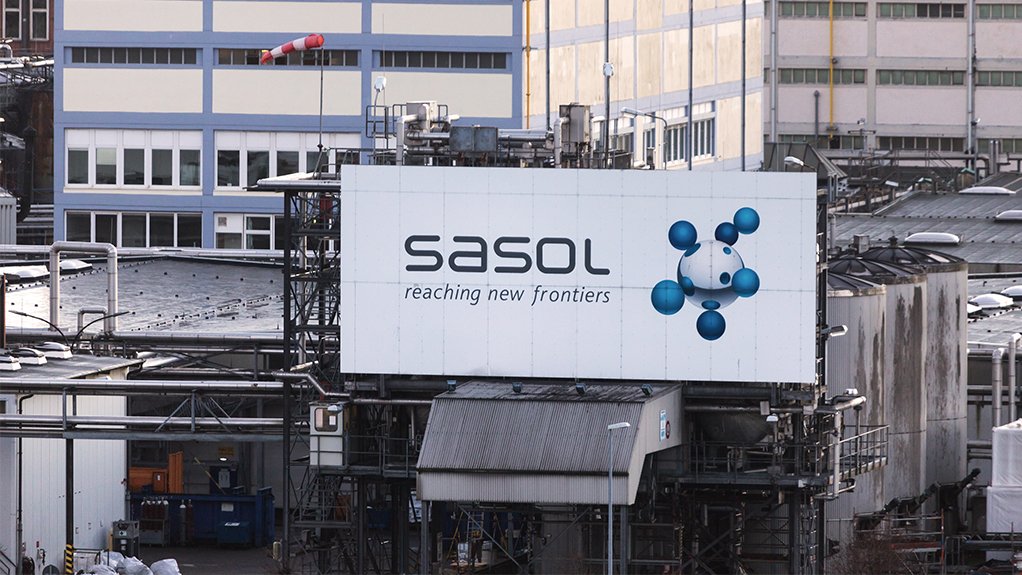Emissions roadmap launched


BRIGHTER FUTURE The need for South Africa to move towards a lower-carbon economy, and to pursue an energy mix that supports this imperative, is of utmost importance
Photo by Adobe Stock
Chemicals and energy group Sasol has announced the launch of its 2030 emissions roadmap for its South African operations.
“This roadmap details our path to at least 10% reduction in greenhouse gas (GHG) emissions by 2030, off a 2017 baseline and was developed taking a long-term view. “It places us on a trajectory for greater reductions post 2030 and positions us to better support the country’s energy transition,” said Sasol president and CEO Fleetwood Grobler in the company’s Climate Change report in August.
The need for South Africa to move towards a lower-carbon economy, and to pursue an energy mix that supports this imperative, is of utmost importance, he mentioned.
For this reason, Sasol is vigorously pursuing gas, renewables and energy efficiency projects, and will not be investing in mining as a growth area while having discontinued all oil growth activities in West Africa.
Natural gas is a transition energy resource for the South African economy. The country's energy and manufacturing sectors have been built on coal as a feedstock and power source, which is also the primary reason for the significant national GHG emissions profile.
South Africa finds itself in an energy conundrum as there are limited or no viable feedstocks that can be readily substituted for coal, specifically for manufacturing, without significant disruption to the economy.
Renewable energy holds substantial opportunity to decarbonise the power sector. However, Grobler mentions that, owing to natural variations in solar and wind resources, renewable energy is not able to generate consistent electricity output 24/7 to run large industrial operations, including Sasol’s Secunda facility.
Gas can, however, be used to provide flexible power generation to supplement renewable energy when these resources are not available. It is also a suitable feedstock for large industrial operations.
Moreover, considering South Africa's national circumstances, exacerbated by Covid-19, it is important that a suitable lower-carbon substitute be sourced in the short to medium term, while sustaining economic and social activity, he pointed out.
“Therefore, growing the share of affordable natural gas is just as important for the South African economy as it is for Sasol. Even though natural gas is a fossil fuel, it is a higher energy-density, hydrogen-rich, flexible feedstock, with significantly lower GHG emissions a unit of energy compared to coal.”
Sasol requires hydrogen, which it produces using coal and water. Historically, coal, a hydrogen-poor material, was the only available feedstock. The use of this feedstock
in hydrogen production accounts for about 50% of GHG emissions at Secunda, he explained.
By using additional and affordable hydrogen-rich natural gas instead of coal, Sasol will be able to significantly reduce its GHG emissions and still operate this facility. For Sasol, natural gas is a transition feedstock that enables further integration of low-carbon technology solutions, over time.
Sasol is further investigating additional sources of gas and is also in discussions with key role-players to enable natural gas to be supplied into the Southern Africa gas delivery system through liquefied natural gas (LNG) imports and pipelines.
“We acknowledge that the life cycle GHG emissions from imported LNG are higher than regional pipeline gas. Therefore, we view LNG as a temporary intervention for the short term to mitigate projected gas declines from current volumes, while we position for long-term pipeline gas,” Grobler noted.
Sasol is also engaging with a number of gas suppliers, infrastructure developers and the relevant State-owned entities in South Africa and Mozambique to develop and execute the required projects to enable additional gas to be delivered to South Africa by the middle of this decade.
“Increased use of natural gas will allow us to transform and significantly reduce our GHG emissions, improve ambient air quality and enable security of energy supply to our operations, when coupled with low-carbon, but intermittent renewable energy.”
He pointed out that enabling renewable energy deployment at scale to reduce Sasol’s emissions is an immediate priority.
In June, Sasol entered the market to procure 600 MW of renewable energy by 2030. This was followed by a request for proposal to develop two 10 MW solar photovoltaic power plants to pilot embedded renewable energy at its Sasolburg and Secunda facilities. Sasol mentions that this is a first step in procuring the total 600 MW of renewable energy.
“We are aiming for construction of the two 10 MW power plants to be completed by 2022, subject to the necessary environmental- impact assessments being approved.”
To realise its renewable energy vision, Sasol is working with recognised leaders in this field, such as the Council for Scientific and Industrial Research and engineering and development consultancy Hatch to understand the maximum potential for renewable energy at its South African operations.
“We are keen to play a leadership role in South Africa’s energy transition and believe we have the capabilities to do so. Although there are challenges, we are excited by the opportunity to help shape this new energy landscape. Indeed, positioning Sasol to succeed in this fast-evolving energy landscape is central to our strategy.”
Article Enquiry
Email Article
Save Article
Feedback
To advertise email advertising@creamermedia.co.za or click here
Comments
Press Office
Announcements
What's On
Subscribe to improve your user experience...
Option 1 (equivalent of R125 a month):
Receive a weekly copy of Creamer Media's Engineering News & Mining Weekly magazine
(print copy for those in South Africa and e-magazine for those outside of South Africa)
Receive daily email newsletters
Access to full search results
Access archive of magazine back copies
Access to Projects in Progress
Access to ONE Research Report of your choice in PDF format
Option 2 (equivalent of R375 a month):
All benefits from Option 1
PLUS
Access to Creamer Media's Research Channel Africa for ALL Research Reports, in PDF format, on various industrial and mining sectors
including Electricity; Water; Energy Transition; Hydrogen; Roads, Rail and Ports; Coal; Gold; Platinum; Battery Metals; etc.
Already a subscriber?
Forgotten your password?
Receive weekly copy of Creamer Media's Engineering News & Mining Weekly magazine (print copy for those in South Africa and e-magazine for those outside of South Africa)
➕
Recieve daily email newsletters
➕
Access to full search results
➕
Access archive of magazine back copies
➕
Access to Projects in Progress
➕
Access to ONE Research Report of your choice in PDF format
RESEARCH CHANNEL AFRICA
R4500 (equivalent of R375 a month)
SUBSCRIBEAll benefits from Option 1
➕
Access to Creamer Media's Research Channel Africa for ALL Research Reports on various industrial and mining sectors, in PDF format, including on:
Electricity
➕
Water
➕
Energy Transition
➕
Hydrogen
➕
Roads, Rail and Ports
➕
Coal
➕
Gold
➕
Platinum
➕
Battery Metals
➕
etc.
Receive all benefits from Option 1 or Option 2 delivered to numerous people at your company
➕
Multiple User names and Passwords for simultaneous log-ins
➕
Intranet integration access to all in your organisation



















